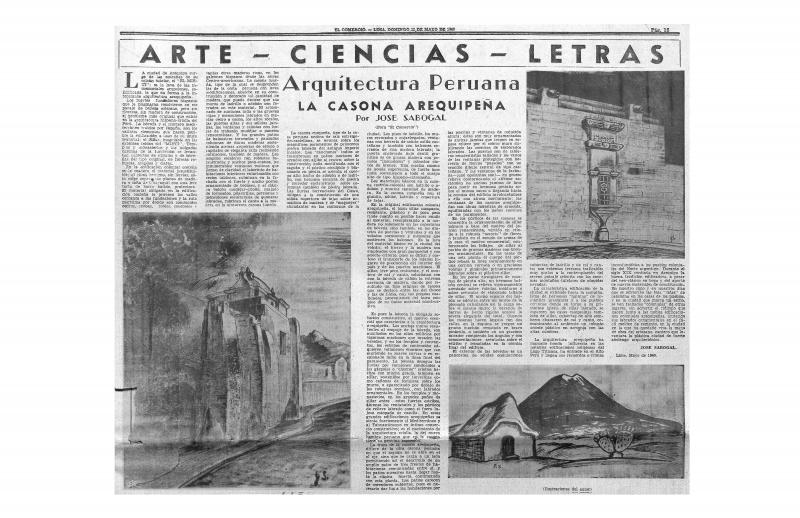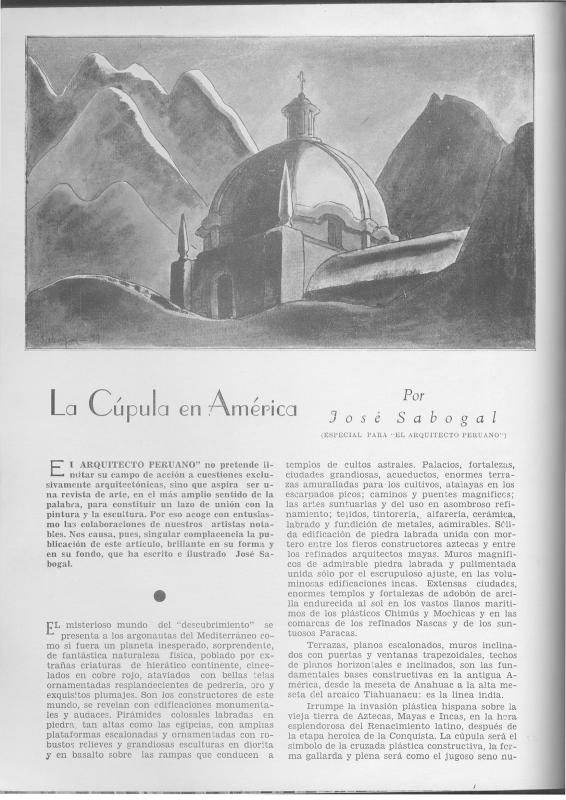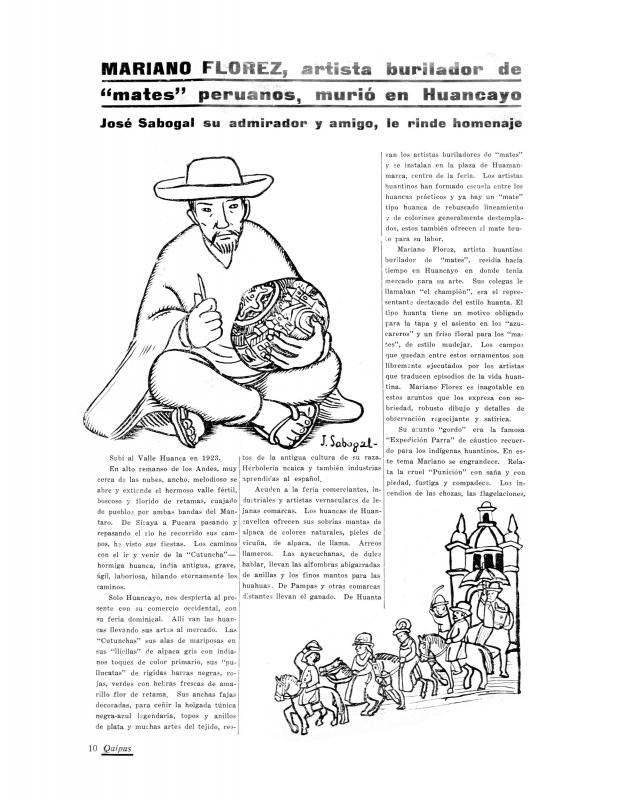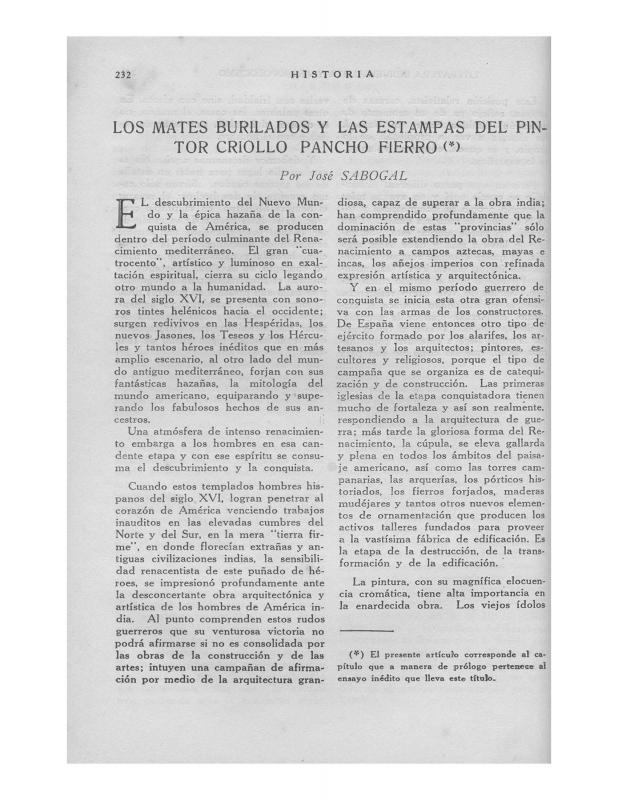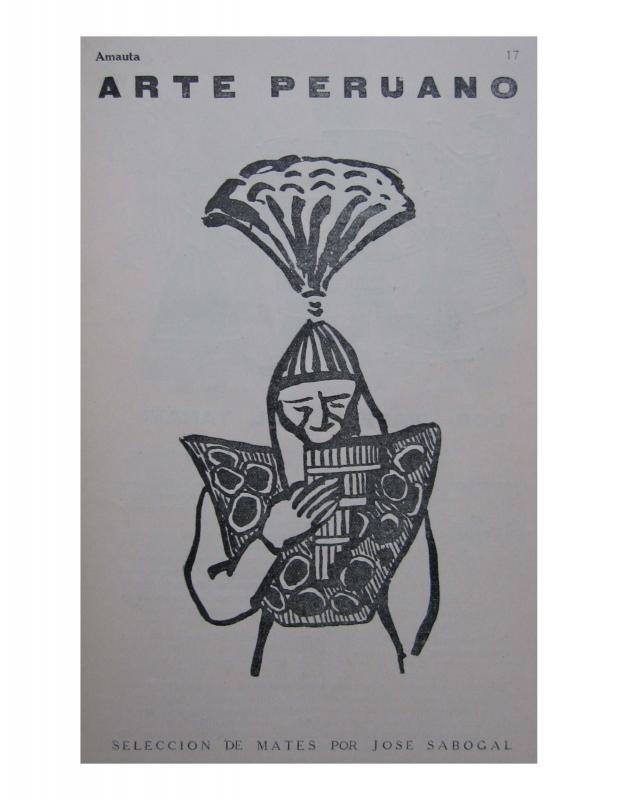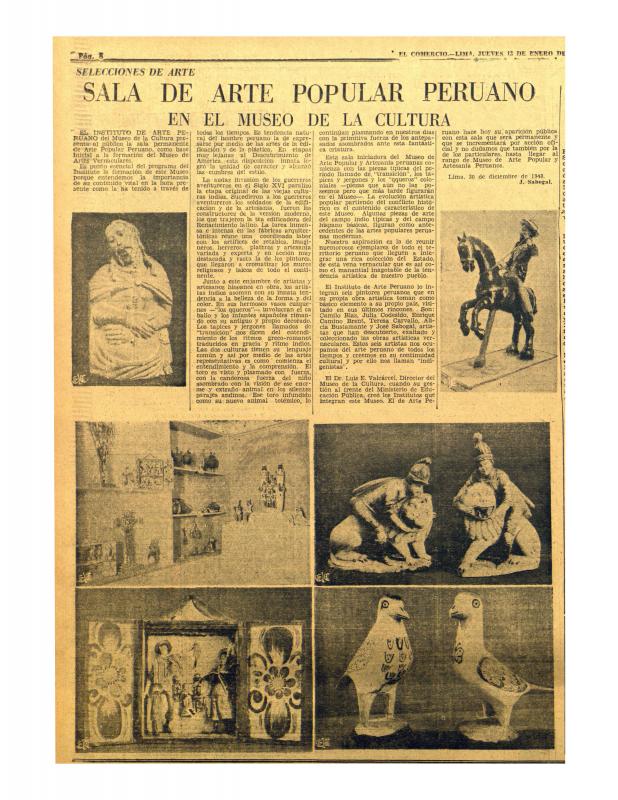The Peruvian journalist and attorney Edgardo Rebagliati discusses the nearly thirty paintings that José Sabogal, the founder of Peruvian indigenist painting, took to Lima after spending several months in Cuzco (circa 1925). Indigenist painting flourished in Peru from the 1920s to the 1940s as part of a broader movement that sought to redefine Peruvian identity in terms of indigenous elements. Although at some points it was entirely focused on the “indigenous” story and the glorious Inca past that also championed a mestizo identity portrayed as a result of the integration of “native” and “Hispanic” cultures. The main ideologue and unchallenged leader of the Indigenist movement in the visual arts was José Sabogal (1888–1956), whose profound interpretation of the concept of “being rooted” was deeply influenced by regional art movements in Spain (exemplified by Ignacio Zuloaga [1870–1945], among others) and in Argentina (Jorge Bermúdez [1883–1926], to mention just one); Sabogal spent a great deal of time in these countries during his formative years. When he returned to Peru in late 1918, he settled in Cuzco where he produced about forty oil paintings of people and scenes of the city; these works were subsequently shown in Lima (1919) at an exhibition that is considered the formal beginning of Indigenist painting in Peru. Sabogal’s second solo exhibition at the Casino Español (1921), established his reputation. He joined the faculty at the new Escuela Nacional de Bellas Artes in 1920, where he was eventually appointed director (1932–43). There he trained a group of painters who joined the Indigenist movement: Julia Codesido, Alicia Bustamante (1905–1968), Teresa Carvallo (1895–1988), Enrique Camino Brent (1909–1960), and Camilo Blas (1903–1985). Sabogal returned to Cuzco from time to time in search of inspiration. In 1925 he spent several months there, making sketches for a set of works that he did not show in public until 1928, when he held two important exhibition, in Montevideo and Buenos Aires. Before then, some critics and interested parties were able to see these works in Sabogal’s studio in Lima, and publish articles that, like this one by Eduardo Rebagliati, testified to the significant cultural and political interest that was being generated by indigenist works of art in certain local circles. [There are many articles about this artist in the ICAA digital archive, including the following written by Sabogal: “Arquitectura peruana: la casona arequipeña (doc. no. 1173340); “La cúpula en América” (doc. no. 1125912); “Mariano Florez, artista burilador de "mates" peruanos, murió en Huancayo: José Sabogal su admirador y amigo, le rinde homenaje” (doc. no. 1136695); “Los mates burilados y las estampas del pintor criollo Pancho Fierro” (doc. no. 1173400); “Los 'mates' y el yaraví” (doc. no. 1126008); “La pintura mexicana moderna” (doc. no. 1051636); and “Sala de arte popular peruano en el Museo de la Cultura : selecciones de arte” (doc. no. 1173418)].

